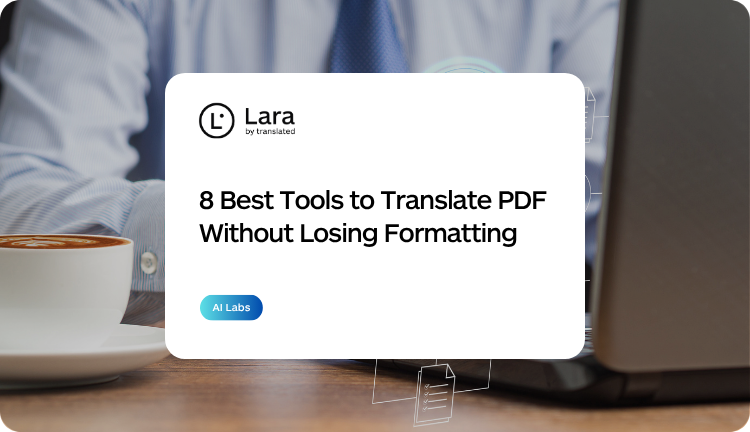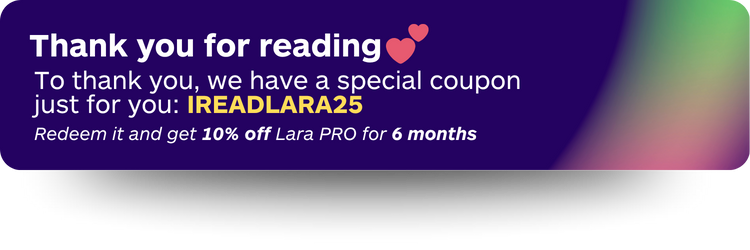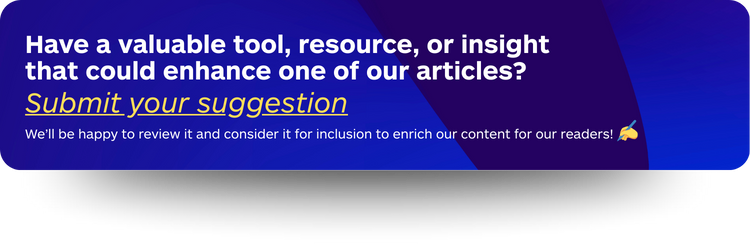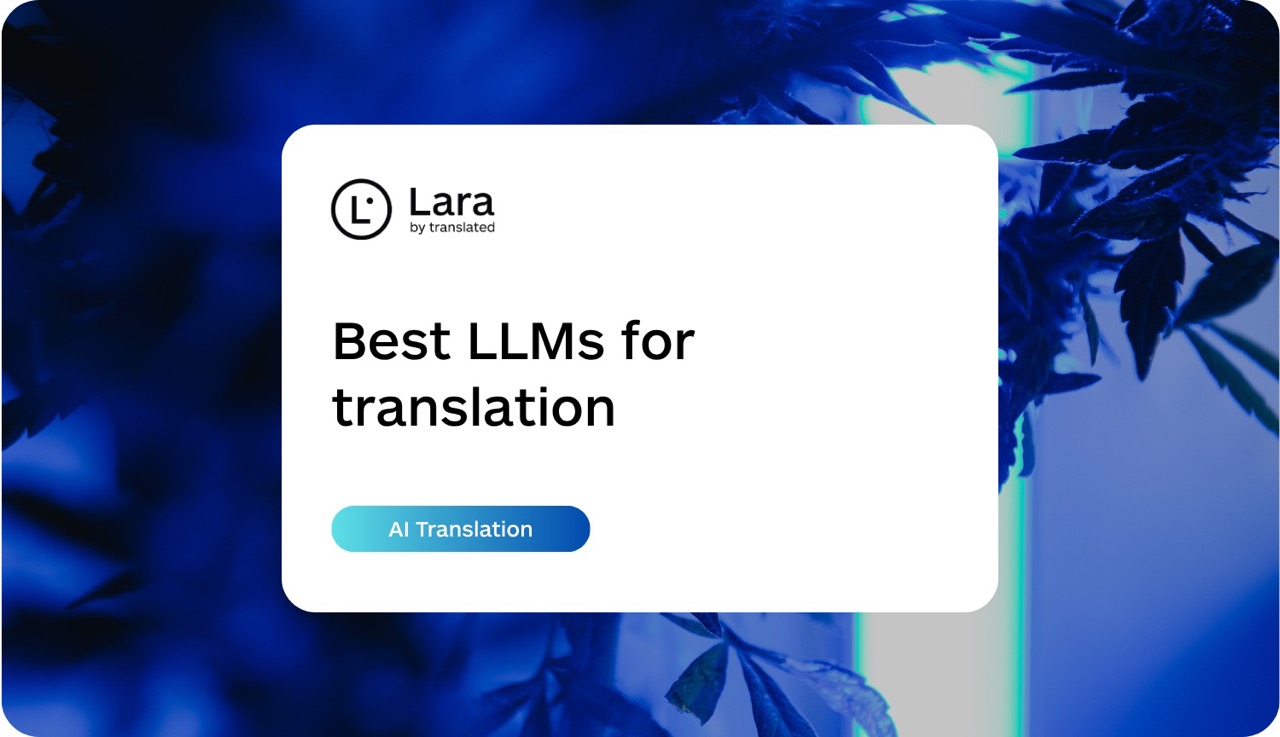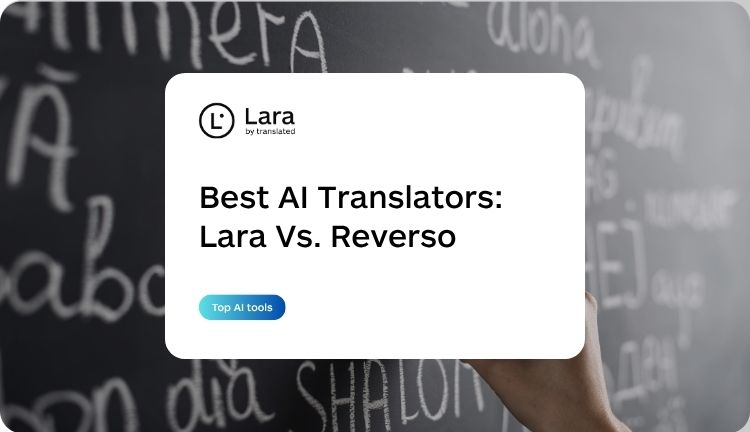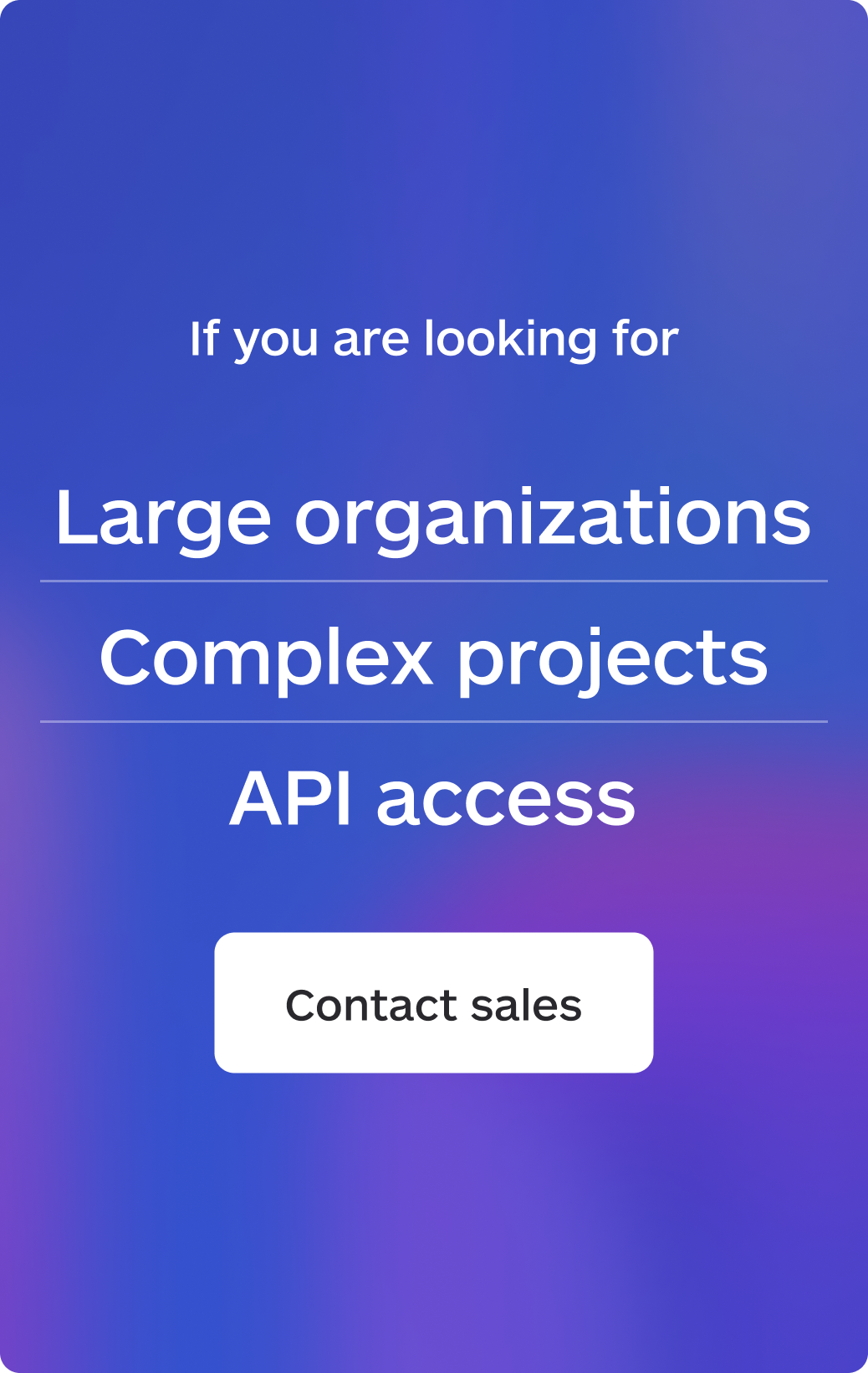When you need to translate PDF without losing formatting, you’re dealing with two challenges at once: ensuring translation accuracy and maintaining document usability. A financial report where tables collapse into text or a technical manual where diagrams shift from captions loses clarity and reliability (here are a few examples). Marketing materials that require a complete redesign after translation defeat the purpose of automation.
To understand how current tools address these challenges, we conducted a comparative test of seven widely used PDF translation tools. Our evaluation focused on aspects that matter most in professional contexts: layout fidelity, font management, table preservation, and OCR performance for scanned files.
TL;DR
|
How we tested
In October 2025 we benchmarked all tools on the same three PDFs: a 28-page financial report with multi-column pages and tables, a 16-page marketing brochure with brand typography, and a 6-page scanned administrative form. Our goal was to translate PDF without losing formatting.
We used EN→DE, EN→ES, and EN↔ZH to stress text expansion and non-Latin scripts. Each tool ran with identical inputs and default settings unless a flagship feature was essential; no manual fixes were applied before scoring. The 0–5 Rating mirrors the compact table and is a composite of Formatting (layout, tables, fonts), OCR performance on scans, and Control Workflow (glossaries/TMs, automation, governance), plus timed post-edit effort to reach a clean, publishable PDF. Versions were current as of the test date. Results can vary by document design and font availability; you can reproduce our setup with a similar three-file pack and your brand fonts.
Quick Comparison Table
| Tool | Rating | Formatting (layout + tables + fonts) | OCR | Control & Workflow |
|---|---|---|---|---|
| Lara Translate Editor’s choice |
5🥇 | Very good; multi-column stable; standard tables hold; fonts follow source | Pre-OCR → translate workflow | Glossaries/TMs; explain-choices; ambiguity flags; API/automation; privacy-first |
| X-doc AI | 4🥈 | Excellent multi-column; tables keep headers/alignments; smart font fallback | Built-in; high accuracy | Terminology control; enterprise compliance; premium |
| PDFelement | 4🥉 | Very good on standard layouts; most tables intact; brand fonts re-apply | Built-in; solid | All-in-one editor; manual terminology; per-seat |
| WPS Office | 3 | Good general formatting; complex tables need tweaks; fonts re-apply | Built-in (basic) | Suite workflow; light terminology; freemium |
| DocTranslator | 3 | Good visual preservation; tables need minor fixes; engine-dependent fonts | Usually pre-OCR required | Simple flow; no native TM; subscription |
| DeepL Pro | 2 | Mixed; multi-column can collapse; weak tables; generic font swaps | No built-in OCR | Glossaries; pro/teams; privacy options |
| Google Translate | 1 | Poor; columns flatten; tables linearize; basic fonts | No built-in OCR in flow | No TM; free |
| ChatGPT | 1 | Poor; text extraction only; no layout/tables | No built-in OCR | Promptable style; no TM; subscription |
Ratings reflect our Oct 2025 test set (financial report, multi-column brochure, scanned form).
1. Lara Translate: specialized Translation Language Model architecture
Lara Translate uses a specialized Translation Language Model architecture designed specifically for translation tasks rather than being a general-purpose large language model adapted for translation. It can translate PDF without losing formatting.
Lara trains on a curated dataset of 25 million real-world translations from professional translators. This includes machine-generated translations that professional translators reviewed and refined, capturing their corrections and reasoning.
The platform handles industry-specific terminology and supports context understanding. Users can upload their own translation memories to adapt the model, and custom glossaries help maintain terminology consistency across projects.
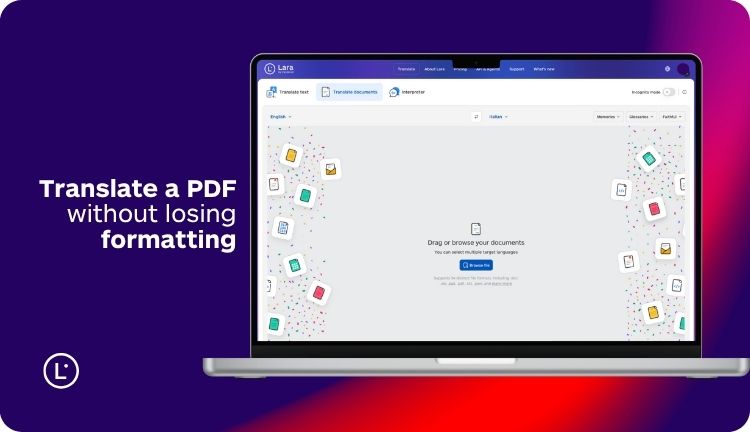
Lara supports an ever-expanding range of languages. To see the most up-to-date list, visit the supported languages page, as new capabilities are added regularly. The platform addresses enterprise data handling requirements. Your data won’t be used for training within Lara, and your model remains private.
API access enables workflow automation. The Lara Agent can automate localization tasks like project management and file preparation. This integration approach suits organizations building translation into content operations.
2. X-doc AI: precision and structure retention
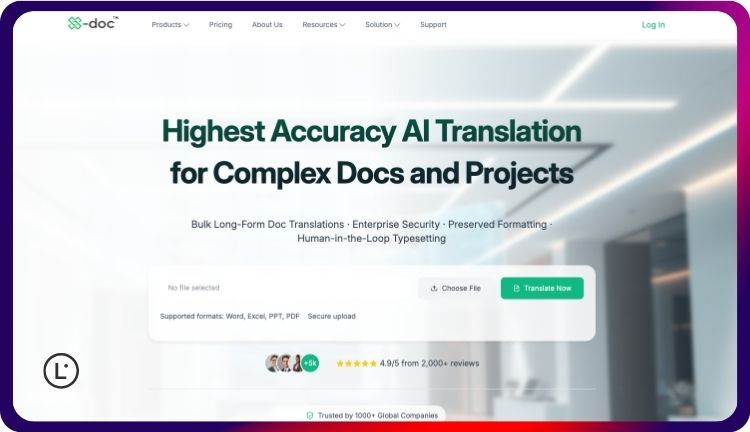
X-doc AI is developed for technical, medical, and regulatory documents where both accuracy and layout preservation are critical. Terminology is handled with precision, and regulatory language maintains its formality. The model appears trained on specialized professional corpora rather than generic text.
In our test, layout preservation outperformed other solutions. Multi-column documents stayed organized, tables maintained structure even when translated text expanded, and page breaks remained logical.
Table management was particularly strong: data alignment stayed intact, and cells automatically adjusted without losing structure. This capability significantly reduces the need for manual reconstruction.
The integrated OCR PDF translator performed well on scanned files, even with mixed fonts, stamps, and handwritten annotations. Security standards such as SOC2 and ISO27001 ensure data protection and encrypted processing.
Although the cost is higher, it reflects the platform’s professional positioning. For industries where translation accuracy and document integrity are equally important, X-doc AI represents a strong option.
3. PDFelement: translation integrated in a complete PDF toolkit
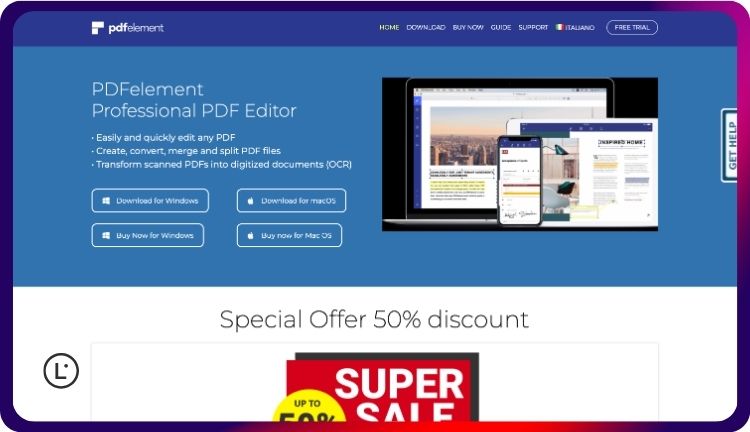 PDFelement treats translation as one of several document management capabilities, alongside robust editing, annotation, and conversion tools. This integrated approach ensures good layout fidelity during translation.
PDFelement treats translation as one of several document management capabilities, alongside robust editing, annotation, and conversion tools. This integrated approach ensures good layout fidelity during translation.
Tables, images, and complex designs remain well-aligned, with only minor spacing adjustments typically needed afterward.
Its OCR PDF translator efficiently handles scanned documents, including mixed fonts or partially degraded text. Post-translation editing occurs within the same platform, streamlining review processes.
Pricing reflects its positioning as professional software rather than a simple translation utility, making it particularly useful for those regularly managing complex PDF translation tools workflows.
4. WPS Office: translation integrated within editing
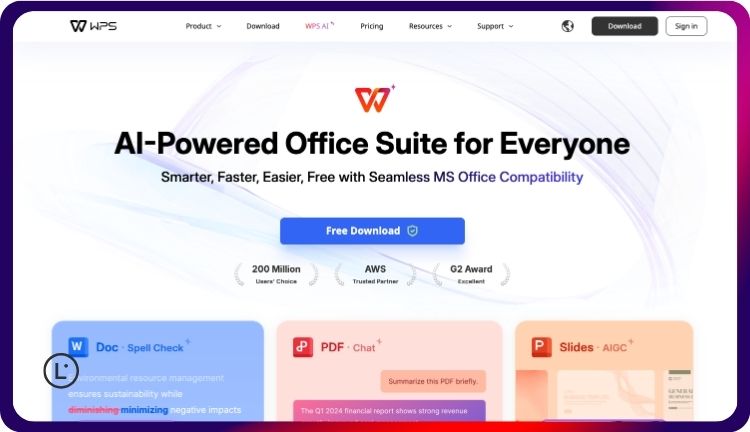 WPS Office integrates translation directly in its PDF editor. The Parallel Translate feature displays source and target texts side by side, facilitating immediate comparison during review.
WPS Office integrates translation directly in its PDF editor. The Parallel Translate feature displays source and target texts side by side, facilitating immediate comparison during review.
Formatting preservation is generally strong, benefiting from the platform’s native PDF handling: layouts, tables, and images remain in place, though brand fonts often require manual reapplication.
Users can export either a translated-only or a bilingual PDF version. The bilingual format proves practical for reference materials. Built-in editing also allows users to correct translations directly within the same environment.
Installation is required, which may limit accessibility for those not using the WPS ecosystem, but for existing users it provides a convenient workflow.
5. DocTranslator: focus on layout preservation
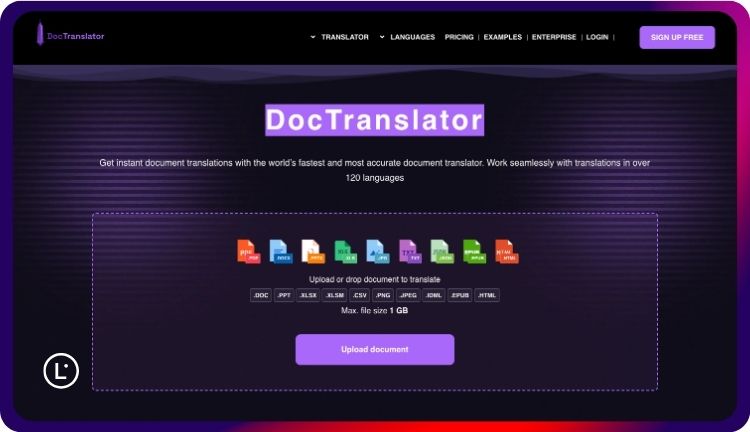 DocTranslator applies format-handling technology over existing translation engines such as Google or DeepL, improving visual results while relying on their linguistic output.
DocTranslator applies format-handling technology over existing translation engines such as Google or DeepL, improving visual results while relying on their linguistic output.
As a result, marketing brochures and formatted reports maintain their layout more effectively: images stay aligned, multi-column designs hold structure, and tables retain readable organization with only minor adjustments.
Since the translation engine is external, quality depends on the selected provider. The main advantage lies in formatting consistency rather than linguistic innovation.
The workflow is straightforward—upload the PDF, choose languages and engine, and download the formatted version. The freemium pricing structure allows occasional or subscription-based use.
DocTranslator is practical for visually designed documents or marketing materials where appearance is as important as accuracy, but it’s less suited for highly specialized technical content.
6. DeepL Pro: linguistic quality with layout limitations
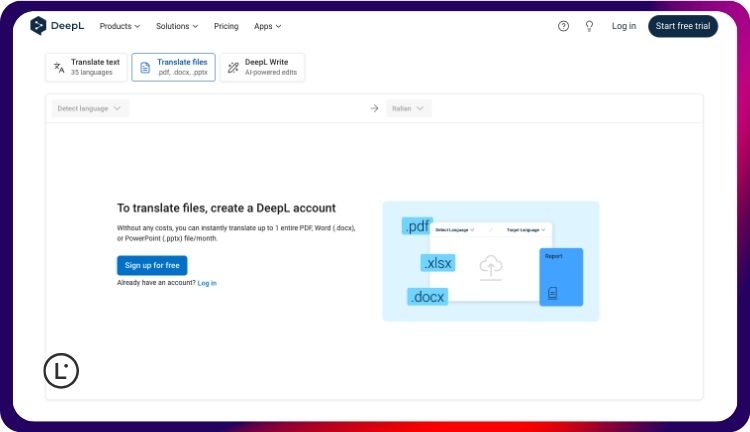 DeepL Pro delivers accurate and fluent translations, particularly for European languages and technical documents. Its glossary feature helps maintain consistent terminology across projects, and custom term bases ensure specialized vocabulary remains uniform throughout longer documents.
DeepL Pro delivers accurate and fluent translations, particularly for European languages and technical documents. Its glossary feature helps maintain consistent terminology across projects, and custom term bases ensure specialized vocabulary remains uniform throughout longer documents.
However, layout preservation can be inconsistent. Simple, single-column documents generally retain their structure, but multi-column sections often collapse and tables may lose their cell organization. Complex financial reports frequently require reconstruction due to scattered cell contents and misaligned numbers.
Font substitution also poses issues: branded typefaces are replaced by generic sans-serif fonts, and translations into non-Latin scripts—such as Chinese—use basic replacements that alter visual balance.
DeepL Pro is suitable when translation accuracy is the top priority and minor reformatting afterward is acceptable. It becomes less practical when maintaining visual integrity is essential. If you want to translate PDF without losing formatting, it’s not the right tool.
7. Google Translate: broad language support, variable precision
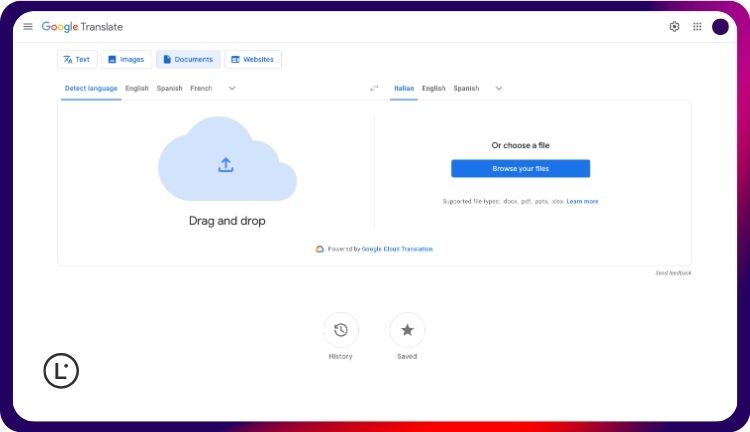 Google Translate covers over 200 languages, making it accessible for combinations rarely supported by specialized PDF translation tools. This extensive coverage can be useful when translating between uncommon language pairs.
Google Translate covers over 200 languages, making it accessible for combinations rarely supported by specialized PDF translation tools. This extensive coverage can be useful when translating between uncommon language pairs.
Quality varies depending on the pair. Common ones like English–Spanish generally produce understandable results, though tone and nuance may appear mechanical. Less frequent pairs can lead to terminology mismatches or shifts in meaning.
Formatting preservation is minimal: even basic memos may show spacing errors, and multi-column layouts often compress into a single column. Tables usually lose structure, turning into linear text that must be rebuilt manually.
Google Translate remains effective for quick comprehension or internal use but is not designed for professional document workflows requiring structural fidelity. And finally, it can’t translate PDF without losing formatting.
8. ChatGPT: flexible approach, minimal formatting retention
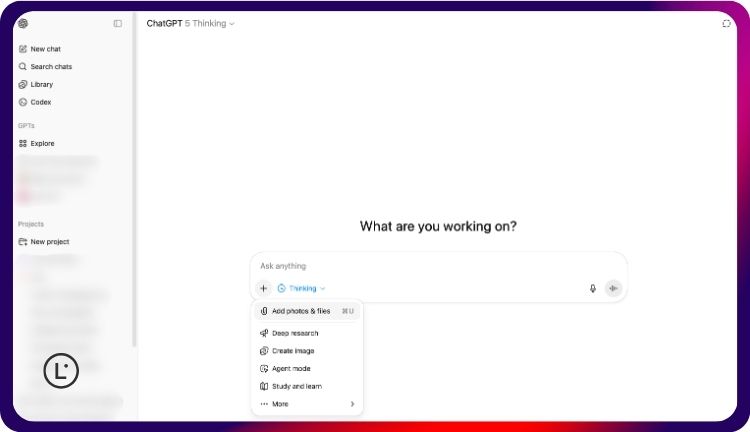 ChatGPT allows customization through prompt instructions that influence tone and style. This flexibility can be useful for adapting marketing or creative texts to specific brand voices.
ChatGPT allows customization through prompt instructions that influence tone and style. This flexibility can be useful for adapting marketing or creative texts to specific brand voices.
However, structure retention remains limited. Even when prompted explicitly, the system extracts text content without keeping layout, images, or tables intact. Multi-column or visually complex PDFs revert to plain text.
Translation quality is acceptable for general documents but inconsistent for specialized terminology. Processing speed also varies depending on document complexity, which can slow down workflows.
ChatGPT is suitable when the translated text will be reformatted manually afterward or when creative control over phrasing is more important than preserving document structure. It actually can’t translate PDF without losing formatting.
Layout fidelity and structure handling
Our test results show that X-doc AI achieved the highest consistency for complex layouts, followed by PDFelement and WPS Office for standard formatting. DocTranslator also improved structure over its underlying engines. By contrast, DeepL, Google Translate, and ChatGPT often disrupted formatting, requiring extensive manual reconstruction.
For documents such as technical manuals, reports, or contracts, preserving layout integrity can determine whether translation saves time or adds extra work.
Font management across languages
Font substitution plays a key role when translating across writing systems. X-doc AI and PDFelement handle character sets and font compatibility intelligently, while other tools rely on default system fonts.
For visually branded materials, manual adjustment is often still necessary after translation to maintain consistent appearance.

Table integrity under translation stress
Tables represent one of the most difficult challenges for PDF translation tools. Text expansion, especially when translating into longer languages like German, can easily distort structure.
X-doc AI preserved table relationships even in complex cases, while PDFelement managed moderate structures effectively. DocTranslator and WPS Office maintained basic table layouts, whereas DeepL, Google Translate, and ChatGPT often disrupted them entirely.
OCR workflows for scanned documents
For scanned PDFs, integrated OCR PDF translator capabilities are crucial. X-doc AI delivered the most reliable recognition, handling low-quality scans and mixed content accurately. And Lara Translate can translate PDF without losing formatting.
PDFelement offered solid OCR for standard files, while WPS Office provided basic functionality. Tools like DeepL, Google Translate, and ChatGPT lack built-in OCR, requiring additional preprocessing.
Organizations dealing with large archives of scanned materials benefit most from tools that combine OCR and translation in a single workflow.
For organizations with significant scanned document archives, integrated OCR becomes essential. The alternative is manual preprocessing adding time and complexity to workflows.
Choosing the right tool
The choice among PDF translation tools depends on document type, complexity, and security needs.
- For simple layouts and quick understanding, Google Translate or DocTranslator may suffice
- For technical, legal, or regulated documents, X-doc AI and Lara Translate provide more control and can translate PDF without losing formatting
- For integrated editing, PDFelement or WPS Office offer efficient environments
- Security-conscious users should prefer solutions with encryption and compliance certifications
Assessing volume and workflow frequency helps determine whether premium subscriptions justify their cost.
The human element remains essential
Despite significant progress in AI translation, human expertise remains a key part of professional workflows when you wish to translate PDF without losing formatting. Reviewers ensure accurate terminology, natural phrasing, and cultural appropriateness.
Combining automation with expert post-editing allows for efficient, high-quality results. Over time, building translation memories and custom glossaries enhances consistency and reduces effort across projects.
FAQs
How do I translate a scanned PDF without losing formatting?
Use a tool with integrated OCR, then translate within the same workflow to keep layout and tables. If OCR is separate, run it once, fix obvious issues, then translate.
Which PDF translator preserves complex layouts and tables best?
For heavy multi-column pages and nested tables, specialized engines perform best. In typical business PDFs, tools with solid table handling and page flow logic reduce manual cleanup.
Can I use free PDF translators for business documents?
Free tools are fine for quick understanding, not for production files. They often flatten columns, break tables, and lack security controls.
How do I ensure consistent terminology across many PDFs?
Use glossaries and translation memories. Load approved terms before translation and keep updating TMs after each review to improve future results.
Does translating a PDF change the fonts or brand look?
It can. Some tools substitute fonts or spacing, especially with non-Latin scripts. Keep brand fonts available and plan a light visual check after export.
Do I need to convert PDF to Word first?
Not always. Some platforms translate PDFs directly while preserving structure. For scans or very complex layouts, a PDF→DOCX route with OCR can help, then export back to PDF.
What is the fastest way to translate many PDFs at once?
Batch processing via API or an automated agent. Set a repeatable workflow: ingest → apply glossary/TM → translate → export → QC checklist.
Is my data safe when I upload PDFs?
Check the provider’s data handling and compliance. Prefer platforms that use encryption in transit and at rest, offer region control, and do not use your content to train public models by default.
What languages are supported for PDF translation?
Most tools cover major languages. For long-tail pairs or mixed scripts, verify support and test a sample page with your fonts.
What is the best PDF translator in 2025 for technical or regulated content?
Choose a solution that balances layout fidelity with terminology control, auditability, and security. For day-to-day team workflows, prioritize consistency, explainability, and automation alongside formatting.
This article is about
- How to translate PDF without losing formatting
- Comparative test of seven leading PDF translation tools in 2025
- Evaluation of translation accuracy, layout fidelity, and OCR capabilities
- How tools like X-doc AI, DeepL Pro, and Lara Translate perform across content types
- Practical guidance on tool selection based on workflow and complexity
- The continuing importance of human review in AI translation
Have a valuable tool, resource, or insight that could enhance one of our articles? Submit your suggestion
Useful articles
